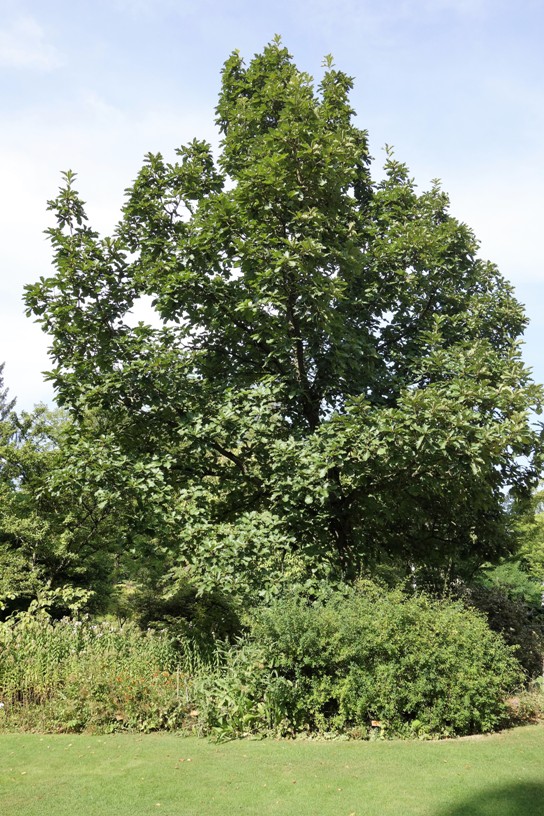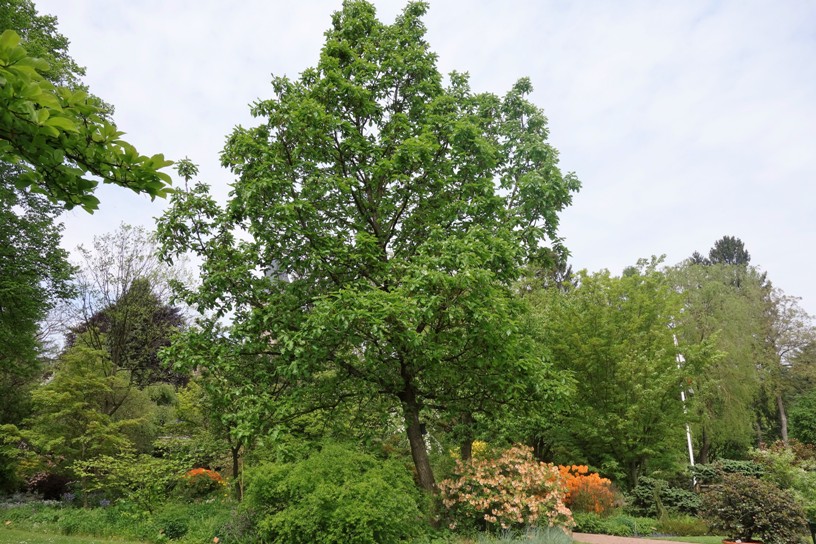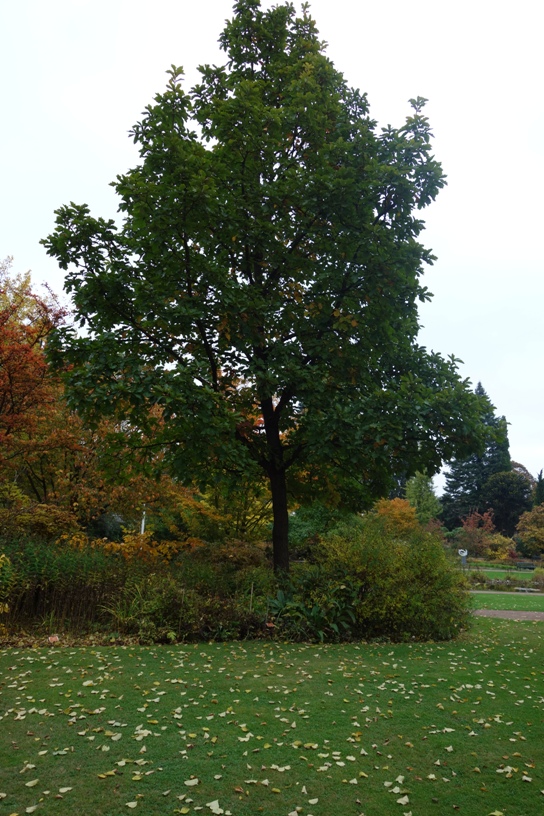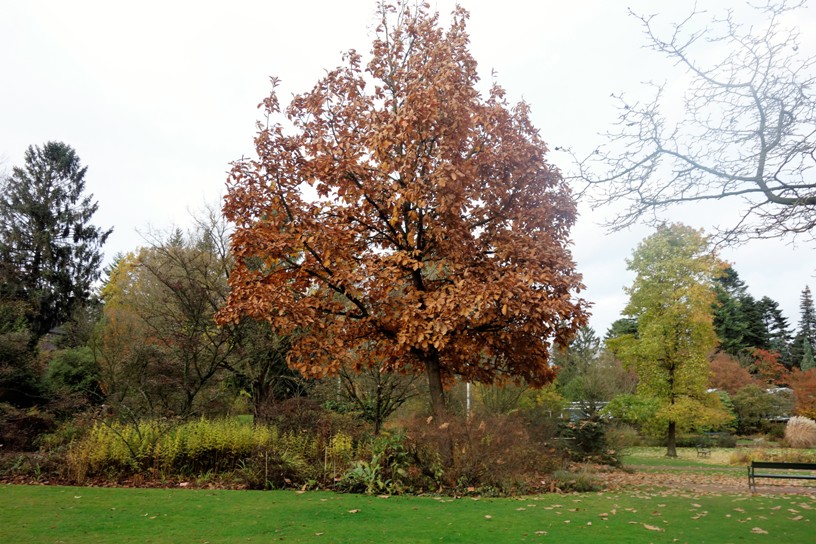Daimio Oak
Quercus dentata
Beech family (Fagaceae)
The biggest leaf
The leaves of this oak are the largest of all species of oak. The lobed leaves and grooved bark are very similar to those of the English (or pedunculate) oak, but with a length of 40 cm they are significantly larger. Although the leaves of the tree die in the autumn, they are often not shed until after winter. The tree itself is smaller than the European species reaching about 15 m in height.
Japanese Emperor oak originates from the far east of Russia, China and Japan. Here the large leaves are used as a wrapping for the rice cake, kashiwa mochi. The acorns, which are borne in hanging clusters, are also eaten. In Korea, they use them in cooking, for example to make jelly.
Themes
Crown jewel in the Kerkrade Botanic Garden.
Since the time of the Three Kingdoms (57 BC - 668 AD), Korean cuisine has used the acorn ('dotori') to make a jelly ('muk') known as 'dotorimuk'. Roasted acorns can be used as coffee substitute whilst cooked and ground acorns can be used for making bread and as a thickening agent in stews. In Japan the leaves are used as a wrapping for 'kashiwa mochi' sweets; fruits are boiled and ground and can be used as a thickening agent or in the preparation of bread.
The galls on the leaves can be used as a rich source of tannin that can also be used as a dye.
Details
| Description: | Tree, 20-25 m tall, with a trunk up to 1 m diameter; after death the large, distinctive leaves are often retained on the tree into winter. |
|---|---|
| Distributions: | Japan, china, korea |
| Year cycle: | Perennial (polycarpic decidous) |
| Hardiness: | Colder than -4 f (very hardy) |
| Flowering period: | Mei |
| Notes on flowers: | The male flowers are pendulous catkins; female flowers are sessile, growing near the tips of new shoots |
| Fruiting period: | September - oktober |
Sources
https://en.wikipedia.org/wiki/Quercus_dentata,IUCN The Red List of Oaks - 2007 Oldfield S et al.,
http://www.gbif.org/species/113610117/verbatim



